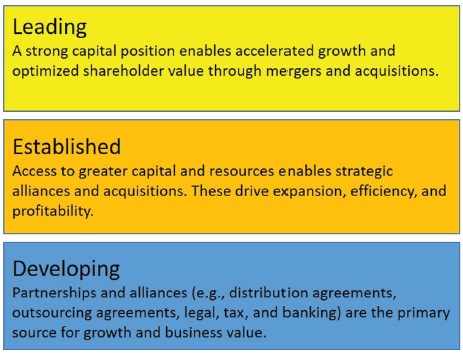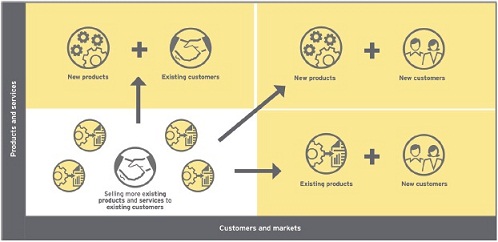CHAPTER 12 Driver #6: Transactions and Alliances “Right transaction, right price, right time”
There’s an old proverb that goes “Fools build houses, and wise men buy them.” When it comes to deciding whether to build or buy in the context of accelerating entrepreneurial growth, it’s more complex and nuanced (see Figure 12.1). Transactions and alliances are almost always part of any exceptional business growth story; the question is deciding when and where to adopt them – and then with whom.

Figure 12.1 EY 7 Drivers of Growth – Transactions and alliances
Your company’s growth is likely to follow a combination of the approaches depicted in the simple matrix shown in Figure 12.2. Growth can be achieved by:
- Selling more existing products and services to existing customers
- Selling new products and services to existing customers
- Selling existing products and services to new customers
- Selling new products and services to new customers.

Figure 12.2 Growth options
The exceptional Entrepreneurs we interviewed have accelerated the growth of their businesses by using a well-planned combination of organic growth (growing both their customer and product base using existing and directly hired resources) and inorganic growth (growing products or customers in new markets through acquisitions ...
Get Daring to Compete now with the O’Reilly learning platform.
O’Reilly members experience books, live events, courses curated by job role, and more from O’Reilly and nearly 200 top publishers.

